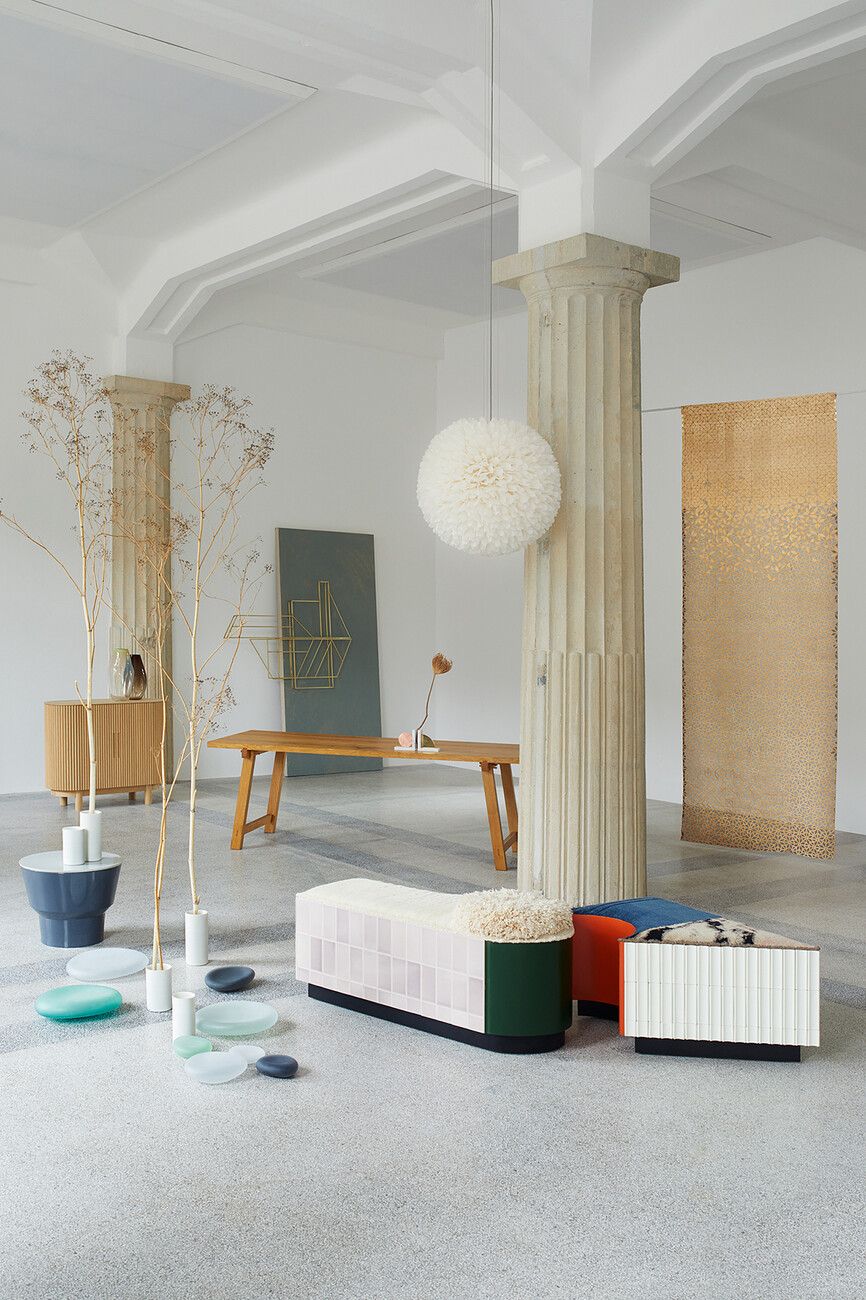Creating networks
Eleven designers, 11 creative minds who decided to join forces this year: Matter of Course. The motivation to do so came from the desire for greater visibility, inspiration through collective debate but also the wish to strengthen individual positions. The multi-disciplinary diversity of their works ranges from furniture via luminaires through to accessories and rugs. “Even before we established the group each of us had already swapped ideas with colleagues but the commitment and continuity you get with a collective makes for more profound dynamics,” says Claudia Schoemig and adds: “Another thing is that the collective multiplies your opportunities for networking with people who are busy addressing similar issues and share your own passion for essentially high-quality products created with patience and dedication and made to last.”
This September Matter of Course presented its first joint exhibition “Balancing Acts” in Friends Space in Berlin’s Kreuzberg district, curated by Anava Projects. The items showcased there sufficed to indicate the immense potential of their collective efforts – be it the contemporary glass objects by Milena Kling, the one-off rugs by Mareike Lienau, the textile design by Elisa Strozyk or the wooden furniture by Nicolene van der Walt.
Another point is that the designers of Matter of Course also help preserve traditional techniques by having their pieces realized both as low-volume productions by small businesses but also in large numbers by established manufacturers: “By adapting the old techniques to produce a diversity of shapes and materiality fitting for the times we can in collaboration with the experts of the various craft institutions inject new life into the trades and ideally infuse them with a new understanding of craftsmanship,” explains Heike Buchfelder. “All the more so now at a time when we need to question consumption more than ever before I see our collective as providing a wonderful pool of ideas capable of serving as inspiration in the area of design,” summarizes Friederike Delius. Simultaneously, the collective casts the spotlight on the presence and creative skills of female designers: “In the collective we can demonstrate the diversity of female design,” says Milena King.





















